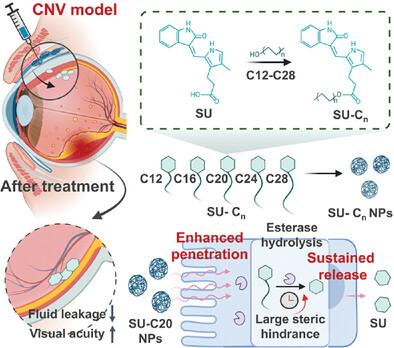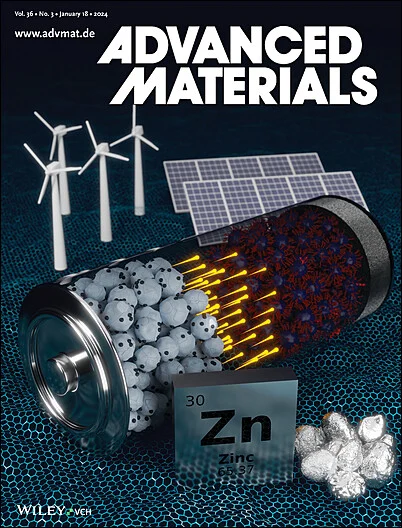The Optimized Lipid-Modified Prodrug for CNV Treatment
IF 27.4
1区 材料科学
Q1 CHEMISTRY, MULTIDISCIPLINARY
引用次数: 0
Abstract
Choroidal neovascularization (CNV) is a prevalent cause of vision impairment. The primary treatment for CNV involves intravitreal injections of anti-vascular endothelial growth factor antibodies. Nevertheless, this approach still faces numerous limitations like poor patient compliance, high therapy expenditure and lack of response in some individuals. Herein, a series of anti-neovascularization prodrugs, SU5402 (SU), modified with lipids of varying chain lengths (C12, C16, C20, C24, C28) is synthesized (SU-C12, SU-C16, SU-C20, SU-C24, SU-C28). 1% polyvinyl alcohol (PVA) is used as a stabilizer to create nanoformulations of five prodrugs named SU-C12 NPs, SU-C16 NPs, SU-C20 NPs, SU-C24 NPs, SU-C28 NPs. Among these, SU-C20 NPs significantly prolong the retention of bioactive drug in the eye for up to 70 d. Moreover, SU-C20 NPs demonstrate superior tissue permeability via enhanced cellular endocytosis and exocytosis. With its prolonged retention and improved penetration, SU-C20 NPs reduce the fluorescence intensity of fundus leakage by 42.5% and the fluorescence area by 51.5% in CNV mice after four weeks, effectively inhibiting the progression of CNV. Altogether, small molecule drug SU is innovatively modified to improve its effectiveness for treating fundus neovascular diseases, proposing an alternative therapy for wet age-related macular degeneration (wAMD).

求助全文
约1分钟内获得全文
求助全文
来源期刊

Advanced Materials
工程技术-材料科学:综合
CiteScore
43.00
自引率
4.10%
发文量
2182
审稿时长
2 months
期刊介绍:
Advanced Materials, one of the world's most prestigious journals and the foundation of the Advanced portfolio, is the home of choice for best-in-class materials science for more than 30 years. Following this fast-growing and interdisciplinary field, we are considering and publishing the most important discoveries on any and all materials from materials scientists, chemists, physicists, engineers as well as health and life scientists and bringing you the latest results and trends in modern materials-related research every week.
 求助内容:
求助内容: 应助结果提醒方式:
应助结果提醒方式:


